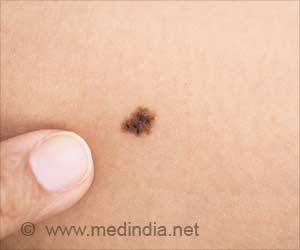By correlating the UV induced DNA damage map with melanoma and other skin cancer mutations, scientists discovered significantly elevated UV damage levels at ETS binding sites that increased mutation rates.

‘By correlating the UV induced DNA damage map with melanoma (a dangerous skin cancer) mutations, scientists discovered significantly elevated UV damage levels at ETS binding sites. The finding can help with DNA repair which is the first step in preventing DNA damage to prevent mutation and skin cancer.’





WSU researchers have developed a next-generation sequencing-based technology that allows them to precisely map the locations of UV-induced DNA damage throughout the whole human genome. Using this advanced technology, they generated a high-resolution UV damage map in human cells. By correlating the UV damage map with melanoma mutations, they discovered significantly elevated UV damage levels at ETS binding sites, which massively increased mutation rates at the same sites in sequenced melanoma genomes.
"UV-induced DNA damage is the major risk factor for melanoma, and DNA repair is a vital first line of defense against DNA damage to prevent mutations and cancer," stated Steven Roberts, assistant professor, WSU School of Molecular Biosciences, in WSU's College of Veterinary Medicine. "These pivotal results establish a fundamental research tool in cancer research and confirms we are on the correct course to further discovery by mapping UV damage in human cells."
Source-Eurekalert















